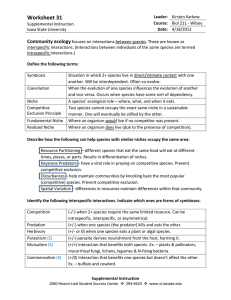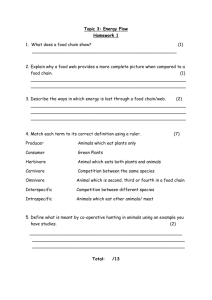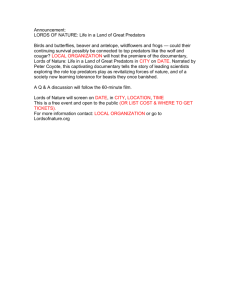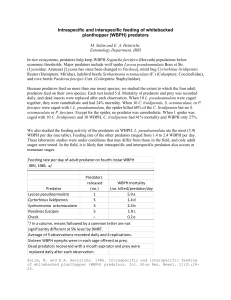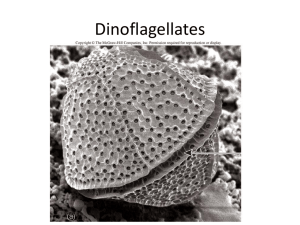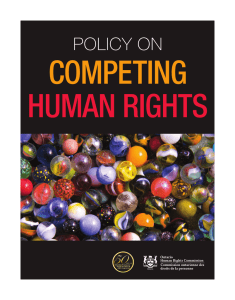Figure 10.01a
advertisement
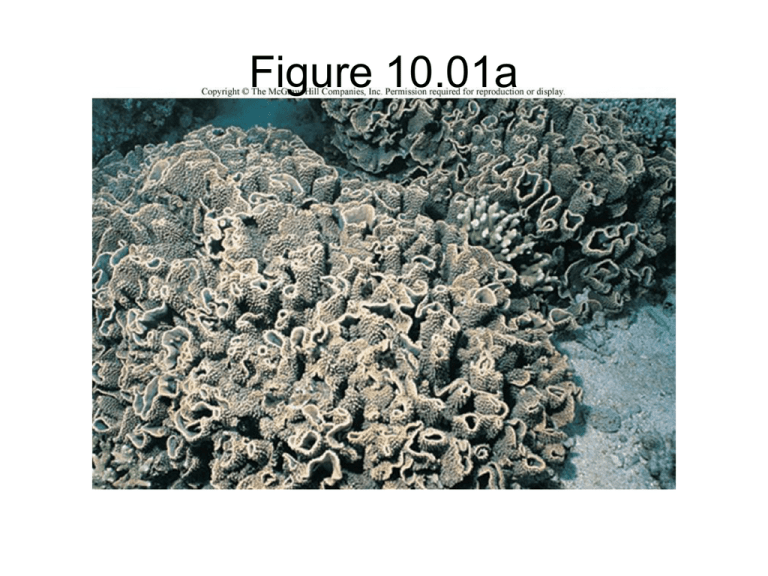
Figure 10.01a Chapter 9 ppt notes Figure 10.01b Figure 10.02 Exponential growth, or J-curve Figure 10.03 Purple and red sea urchin explosion can have disastrous effects on other populations Figure 10.04 Population can’t go on forever, eventually they will run out of resources. Carrying capacity is the largest population that can be sustained by available resources. A limiting resource or factor is one in short supply prevents growth of a population. Biotic factors are alive: prey, predators, disease Abiotic factors are nonliving: weather, pollution, pesticides, temperature, salinity, waves, gravity Figure 10.05 These hermit crabs are competing with each other for the best home. When the same species compete it is intraspecific competition Figure 10.06 The whale shark evolved to have a big mouth to better feed on plankton Figure 10.07 Cone shell catching and eating a fish. Figure 10.08 Dragon fish is well camouflaged to prevent predators from finding it Interspecific competition is between species. Competitive exclusion is when one species eliminates another by out competing it. Resource partitioning is how species may share a resource. They may feed at different times or at different places. Niche is an organisms role in the ecosystem Figure 10.09 Some barnacles live exclusively on the skin of whales

